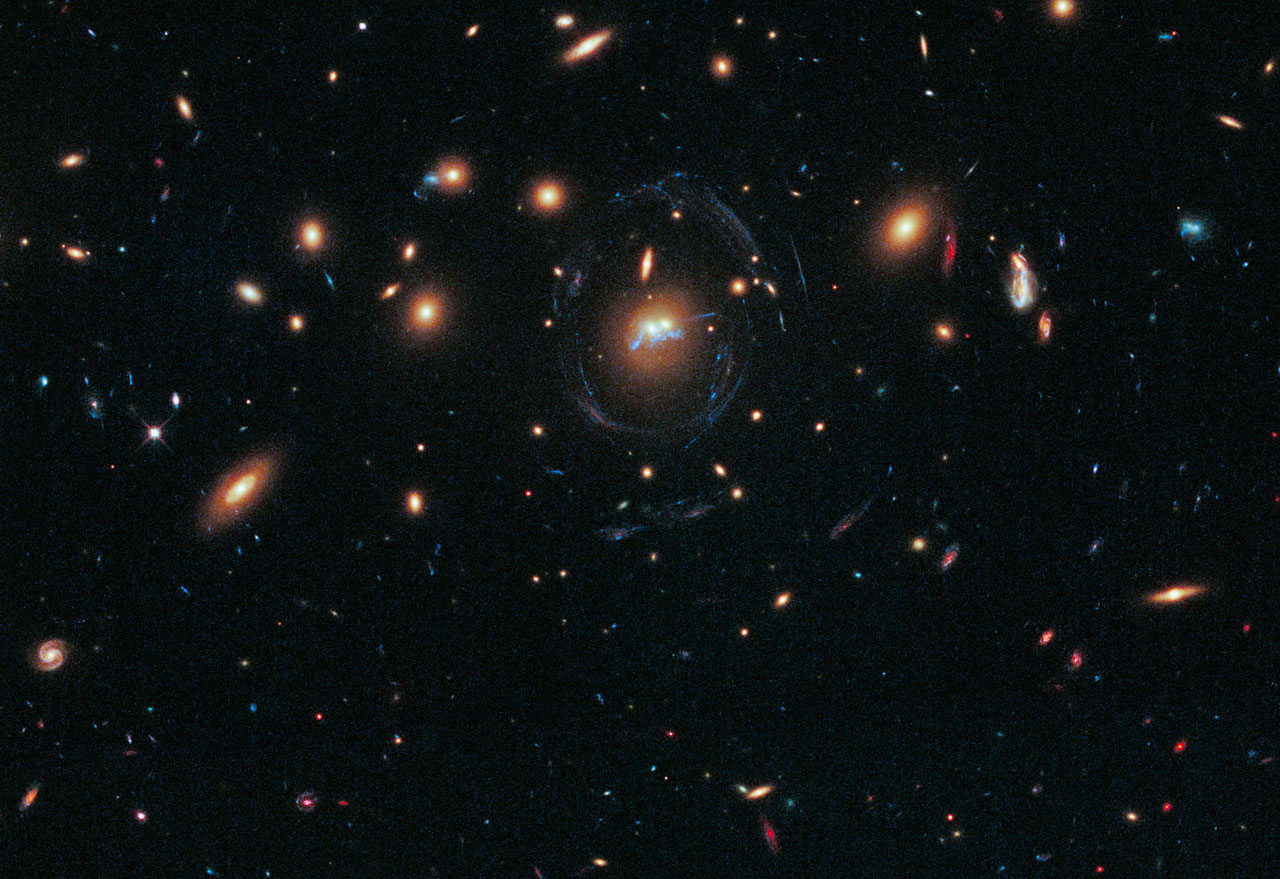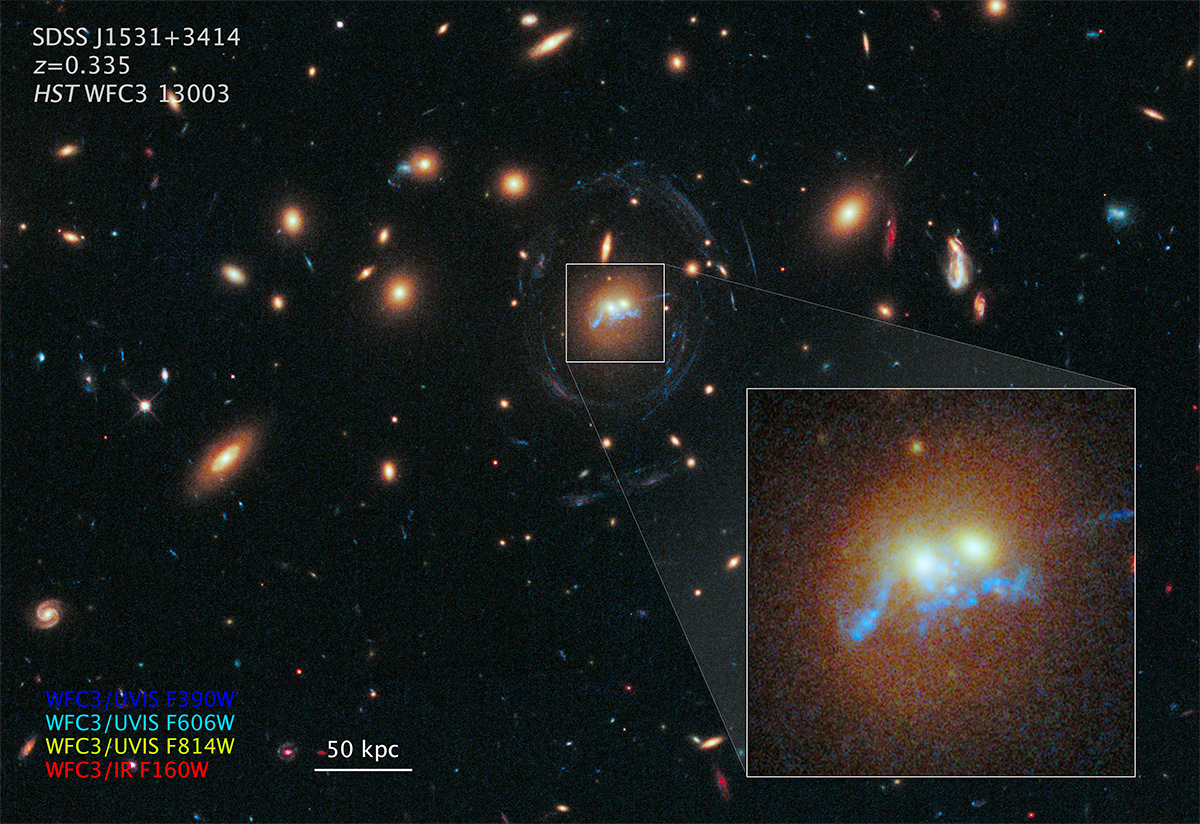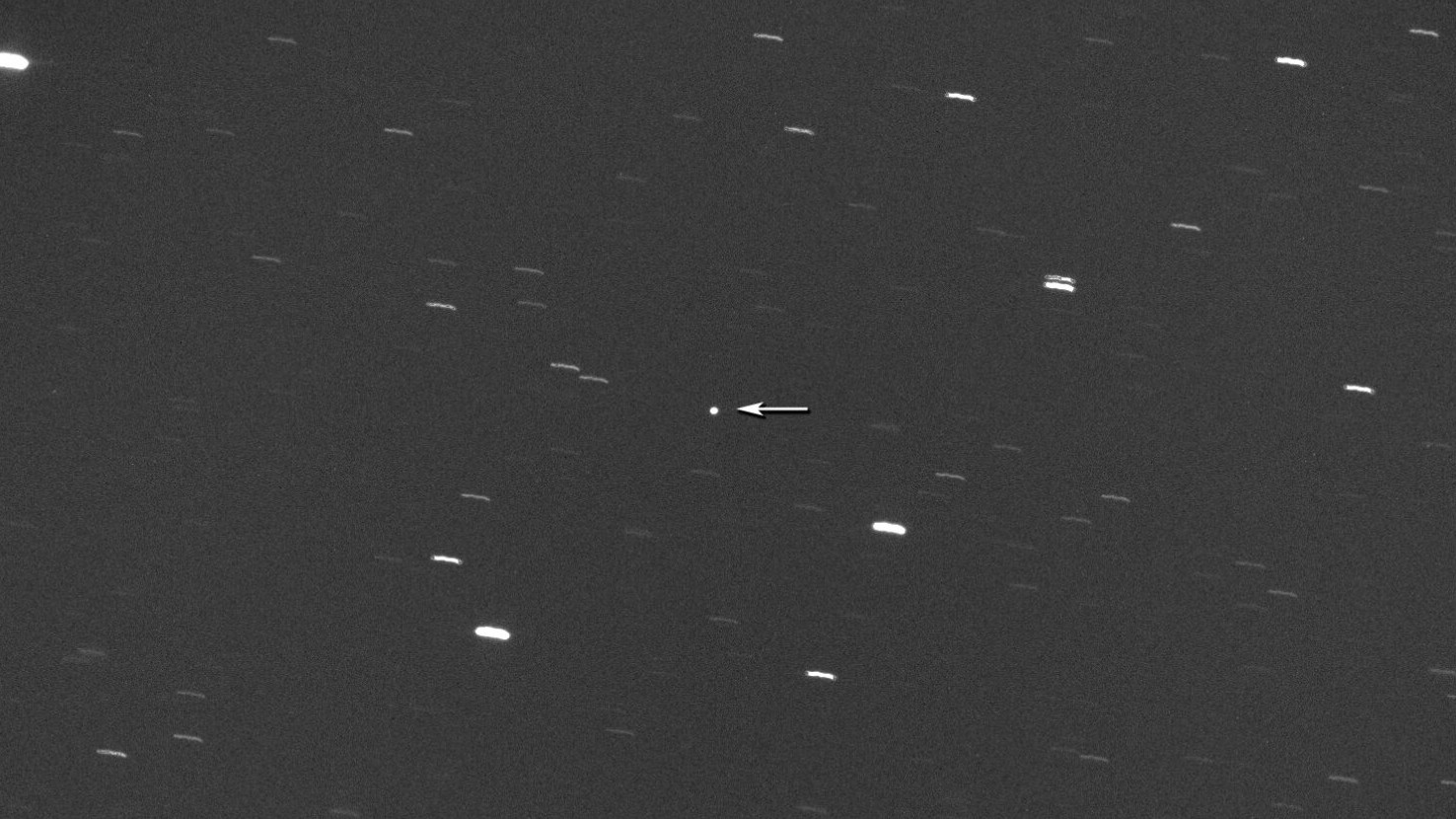
NASA's Hubble Space Telescope has spotted a strange celestial "string of pearls" wrapped around the hearts of two merging elliptical galaxies.
The curly string is about 100,000 light-years long and sports blue "pearls" — actually huge young star clusters — every 3,000 light-years along the way, researchers said. You can zoom in on the beautiful structure, and learn more about it, in this new Hubble video.
"We were surprised to find this stunning morphology," study leader Grant Tremblay, of the European Southern Observatory in Garching, Germany, said in a statement. "We've long known that the 'beads on a string' phenomenon is seen in the arms of spiral galaxies and in tidal bridges between interacting galaxies. However, this particular supercluster arrangement has never been seen before in giant merging elliptical galaxies."
The two colliding galaxies, which lie within a cluster known as J1531+3414, are both about 330,000 light-years wide, researchers said. (For comparison, the disk of our own Milky Way spans about 100,000 light-years.)

Their merger has sparked an intense burst of star formation, resulting in the creation of the clusters of young, blue stars. The physics behind the string-of-pearls structure are similar to the processes that cause rain to fall in drops as opposed to steady streams, researchers said.
It's unclear where the cold gas that's fueling the star formation came from. It may have existed all along within the two merging galaxies, or it may have condensed from the bubble of superhot plasma surrounding the duo, perhaps cooling out of the shock wave created by the cosmic collision, researchers said.
"Whatever the origin for this star-forming gas is, the result is awesome," Tremblay said. "It's very exciting. You can't find a mundane explanation for this."
Get the Space.com Newsletter
Breaking space news, the latest updates on rocket launches, skywatching events and more!
The bright blue arcs surrounding the galaxy cluster in the new Hubble photo are light from distant galaxies, which the cluster's powerful gravity has warped into strange patterns, researchers said.
Follow Mike Wall on Twitter @michaeldwall and Google+. Follow us @Spacedotcom, Facebook or Google+. Originally published on Space.com.
Join our Space Forums to keep talking space on the latest missions, night sky and more! And if you have a news tip, correction or comment, let us know at: community@space.com.

Michael Wall is a Senior Space Writer with Space.com and joined the team in 2010. He primarily covers exoplanets, spaceflight and military space, but has been known to dabble in the space art beat. His book about the search for alien life, "Out There," was published on Nov. 13, 2018. Before becoming a science writer, Michael worked as a herpetologist and wildlife biologist. He has a Ph.D. in evolutionary biology from the University of Sydney, Australia, a bachelor's degree from the University of Arizona, and a graduate certificate in science writing from the University of California, Santa Cruz. To find out what his latest project is, you can follow Michael on Twitter.
